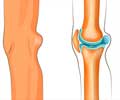Arthroscopic shoulder stabilization procedure outcomes can be improved by reserving the procedure for athletes with fewer incidents of pre-operative instability.
- Arthroscopic stabilization is performed on athletes with fewer incidents of pre-operative shoulder instability
- Shoulder instability or dislocation often results in loss of function and pain in the shoulder
- Performing arthroscopy on young athletes after the first dislocation is highly recommended, as it can bring better outcomes
The primary results determined were the rates at which revision surgery had to be performed and return to sports at a minimum follow-up of 2 years.
The researchers found that
- The rate of revision surgery was very low, at 6%
- The percent of athletes who returned to the sport at an average of 7 months following surgery was 82%
- Forty-two (63%) of the 67 athletes had experienced only one dislocation and only a few had more than two instability episodes
- All of the six recurrences occurred in males
Cordasco says that undergoing pre-operative evaluation can determine the best procedure to select from the menu of operations available to manage shoulder instability. The types of operations include:
- Arthroscopic stabilization
- Open stabilization and
- Bone augmentation, such as Latarjet reconstruction
This study demonstrates that the revision surgery rate is low and the return to sport rate is high when an arthroscopic stabilization is performed on the high-risk young athlete who presents with fewer episodes of pre-operative instability; also the rates might be the best if surgery is done after the first dislocation.
References:
- Andrea Pantalone, Daniele Vanni, Matteo Guelfi, Michele Di Mauro, Michele Abate, and Vincenzo Salini., "Arthroscopic treatment of shoulder instability in professional athletes" Muscles Ligaments Tendons J 2017 Oct-Dec; 6(4): 440–444. doi: 10.11138/mltj/2016.6.4.440













